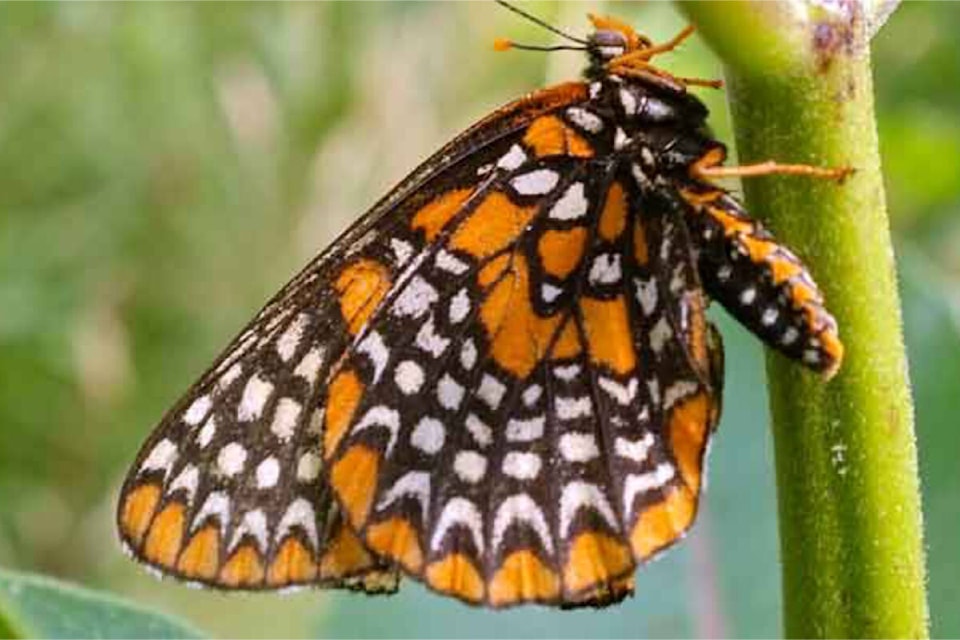By David Clements/Special to Langley Advance Times
It is very easy to see how checkerspot butterflies got their name.
Our local B.C. Taylor’s checkerspot sports the characteristic black, white, and red checkerboard pattern.
Alas, it is very hard to find a Taylor’s checkerspot butterfly anymore.
In 2000, no Taylor’s checkerspots could be found in Canada – even with careful searching of the site of their last known occurrences on Hornby Island.
So Taylor’s checkerspot was thought to be extirpated in Canada, meaning it was locally extinct here, though still hanging on in relatively small populations in the United States.
Populations discovered on Denman Island in 2005 and near Campbell River in 2018 brought new hope.
A captive breeding program underway at the Greater Vancouver Zoo promises that we will not have to use either of the somber “e words” – extinct or extirpated – to describe these beautiful creatures.
Since 2020, Wildlife Preservation Canada (WPC) staff have been rearing caterpillars at the zoo from eggs obtained via breeding butterflies from the population near Campbell River.
Every spring, larvae are released at Helliwell Provincial Park on Hornby Island.
The two-centimetre-long caterpillars are released one at a time by CPC staff and volunteers, to ensure their best chance of success.
This spring was a banner year, with 5,400 larvae released.
Still many things can go wrong in the lifecycle of a butterfly, so it will likely take many more years to produce a self-sustaining population.
By now you should be asking the question, what drove these butterflies towards extinction in B.C.?
We often think of B.C. as a land of forests, but open meadow habitats are an important part of the province’s habitat that are disappearing, and I have seen the precipitous loss of these habitats in my own research on Garry oak ecosystems.
Helliwell Provincial Park, on Hornby, features expansive meadows including the butterfly’s food plants, making it an ideal location to become a permanent home for checkerspots once again.
Is all this effort for one butterfly species worth it?
The standard answer is, it’s not just about one species, but rather that this species represents the habitat – in this case, the endangered meadow habitats in B.C.
Beyond the standard answer though, is it not worth it for this species itself?
Just look at this butterfly, and I think you’ll have the answer.
– David Clements PhD, is a professor of biology and environmental studies at Trinity Western University
PAST GREEN BEAT: The power of water
RECENT GREEN BEAT: Some hope for plastics in our future
OTHER GREEN BEAT: Hundreds of species spotted in Langley watersheds
.
story tags
